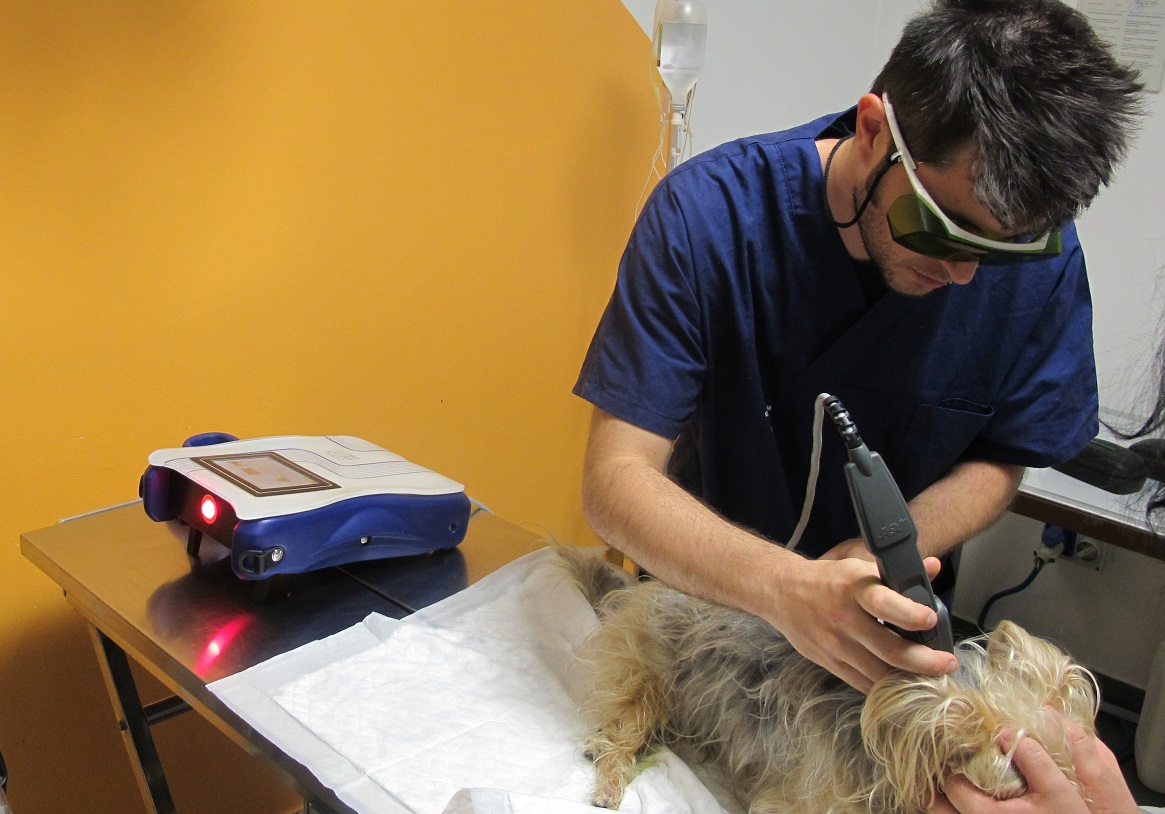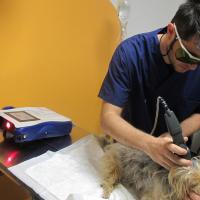 What have in common a mongrel dog suffering from elbow dysplasia and a Cavalier King with a cervical hernia? Both have been successfully treated with MLS® Laser Therapy. Patrik Romagna, vet technician with a degree in science and technology animals has applied them the therapy, prescribed by the staff of the Veterinarian Hospital of Cles (Tn) and of the Centro Storico Clinic of Bolzano that deal with pets and exotic animals. «I frequently use MLS® in my daily work - explains Romagna - because its devices are well tolerated by the animals, handy, and they can be easily transported or moved even during therapy. In many cases it allows to avoid drugs and, above all, it is effective in dealing with a large and heterogeneous group of disorders».
What have in common a mongrel dog suffering from elbow dysplasia and a Cavalier King with a cervical hernia? Both have been successfully treated with MLS® Laser Therapy. Patrik Romagna, vet technician with a degree in science and technology animals has applied them the therapy, prescribed by the staff of the Veterinarian Hospital of Cles (Tn) and of the Centro Storico Clinic of Bolzano that deal with pets and exotic animals. «I frequently use MLS® in my daily work - explains Romagna - because its devices are well tolerated by the animals, handy, and they can be easily transported or moved even during therapy. In many cases it allows to avoid drugs and, above all, it is effective in dealing with a large and heterogeneous group of disorders».
Name and Surname: Patrik Romagna
City: Bolzano
He works with: Companion animals
Among the various cases in which you used MLS®, are there someone, in particular, in which the therapy has been resolutive?
I have a lot of examples but if I've to choose, I think that MLS® Laser Therapy has proved its high effectiveness in treating a mongrel dog of 5 YO suffering from elbow dysplasia. It has been treated with a cycle of 8 sessions for a marked lameness at the forelegs: already after the first sessions, it could walk much better and was more active. At the end of the applications, the dog returned to play and to run without limping. Significant is also the case of a Cavalier King suffering from a cervical hernia which led it to complain, to be reluctant to move, to sleep only for a short time and to cry often. Treating it with a series of eight sessions of MLS® and then with 1 session per month for maintenance, the dog has stopped to complain, has resumed to sleep peacefully and now is much more active. In this case MLS® has allowed us to avoid surgery.
An added value for the welfare of the animal...
Undoubtedly. This is also one the reasons why we have pushed to adopt it, along with the opportunity to further expand our service in orthopedics and dermatology sector. Its usability, rapidity of application, the handling of the Mphi Vet device and, not least, the opportunity it offers to the owner to attend the therapy, has convinced us to buy it.
Chapter owners: How do they react, when MLS® is proposed as therapy for their pet?
In the beginning, many owners are skeptical and suspicious, but after a few sessions, seeing their pet feel better, they get convinced of the effectiveness of the treatment.
Maybe also, the reaction of animals to therapy reassure them. How do the small animals and exotic species react to it?
Most of the animals tolerate the therapy very well. Those naturally restless have some initial difficulties, but after the first few sessions they patiently calm down and accept it.
In these cases can be helpful the handiness of the Mphi Vet devices?
It’s very helpful because it offers us the opportunity to treat them without limit them too much. A further strength is the protocols that are provided. Personally I frequently use those focused on “arthritis” and “acute and chronic inflammation”.
In terms of improvement, as you often work with Mphi Vet device, have you any suggestion?
The only suggestion I would recommend regards the handpiece. Thinking of knee or elbow, a shorter or more flexible handpiece could be very helpful. It could facilitate the MLS® treatments in those animals that do not like to change position because they are always sat.





